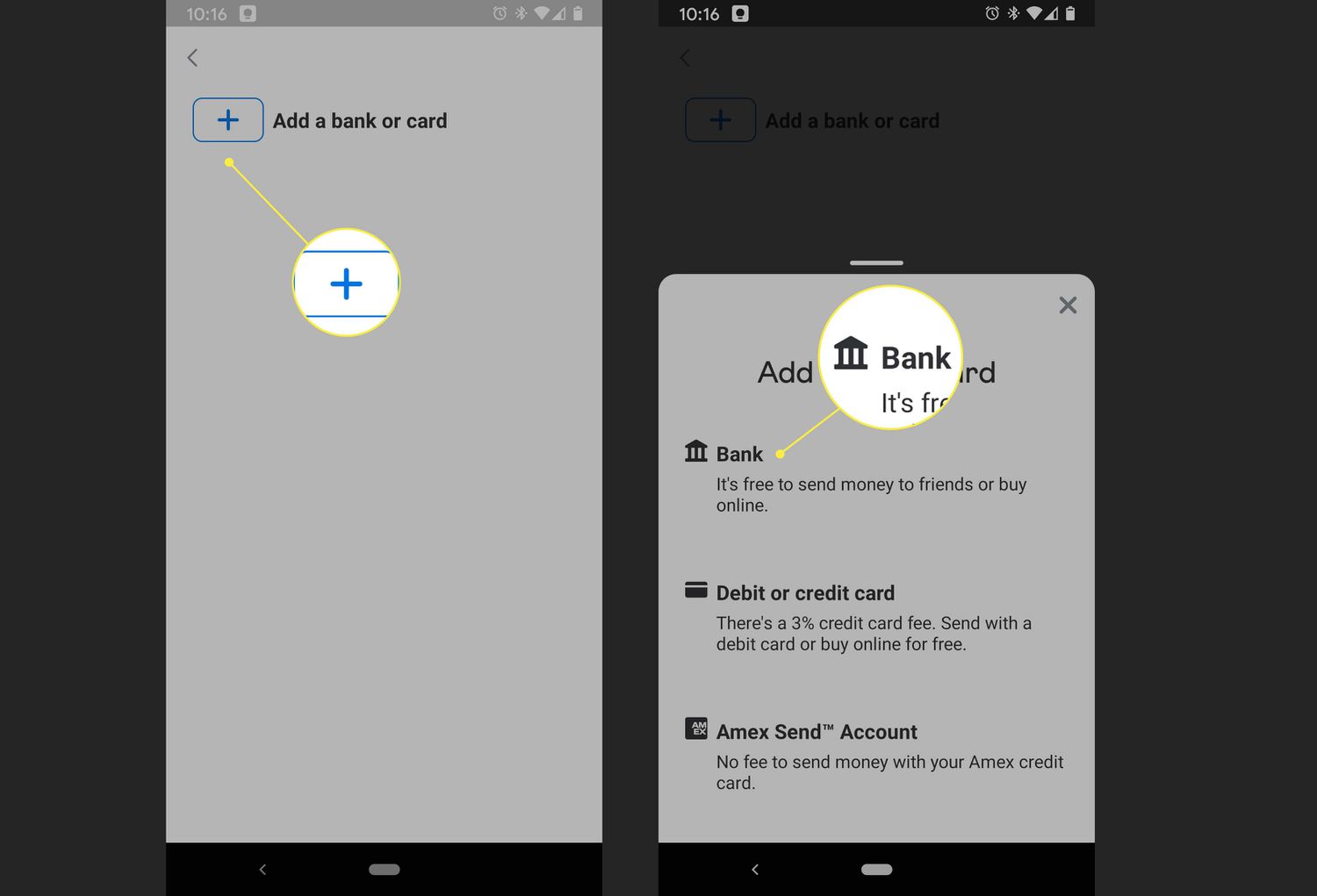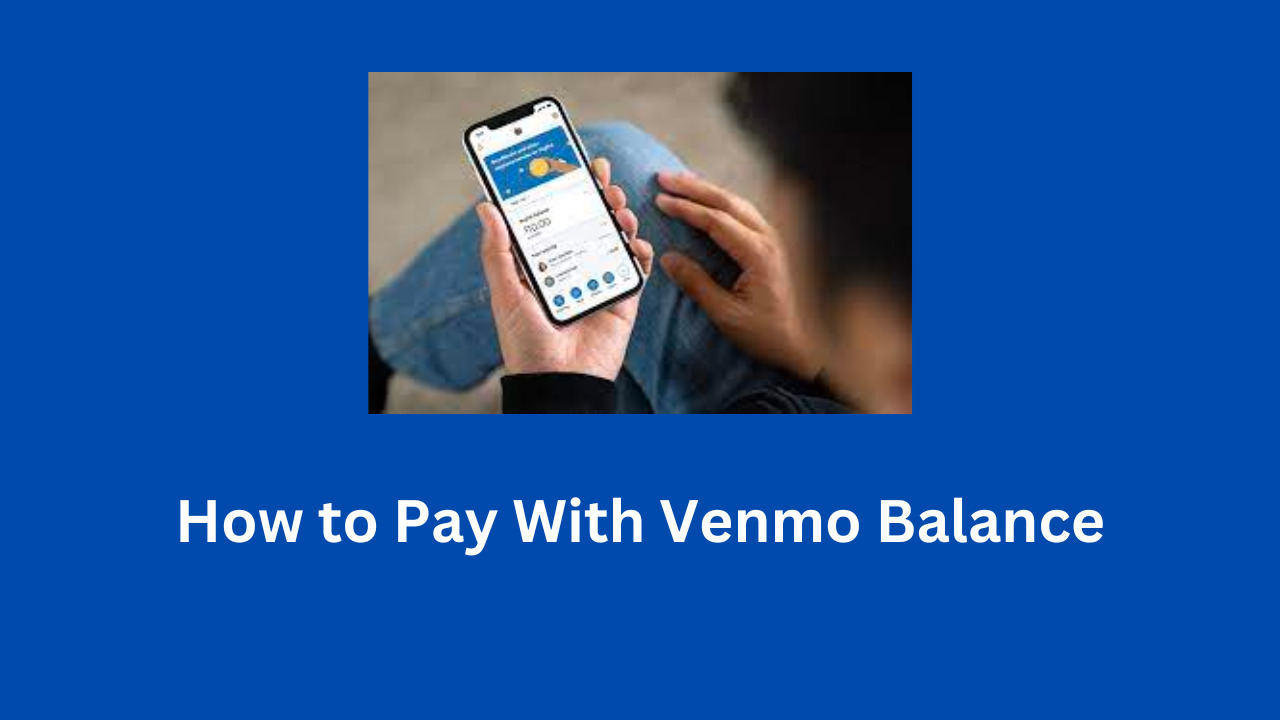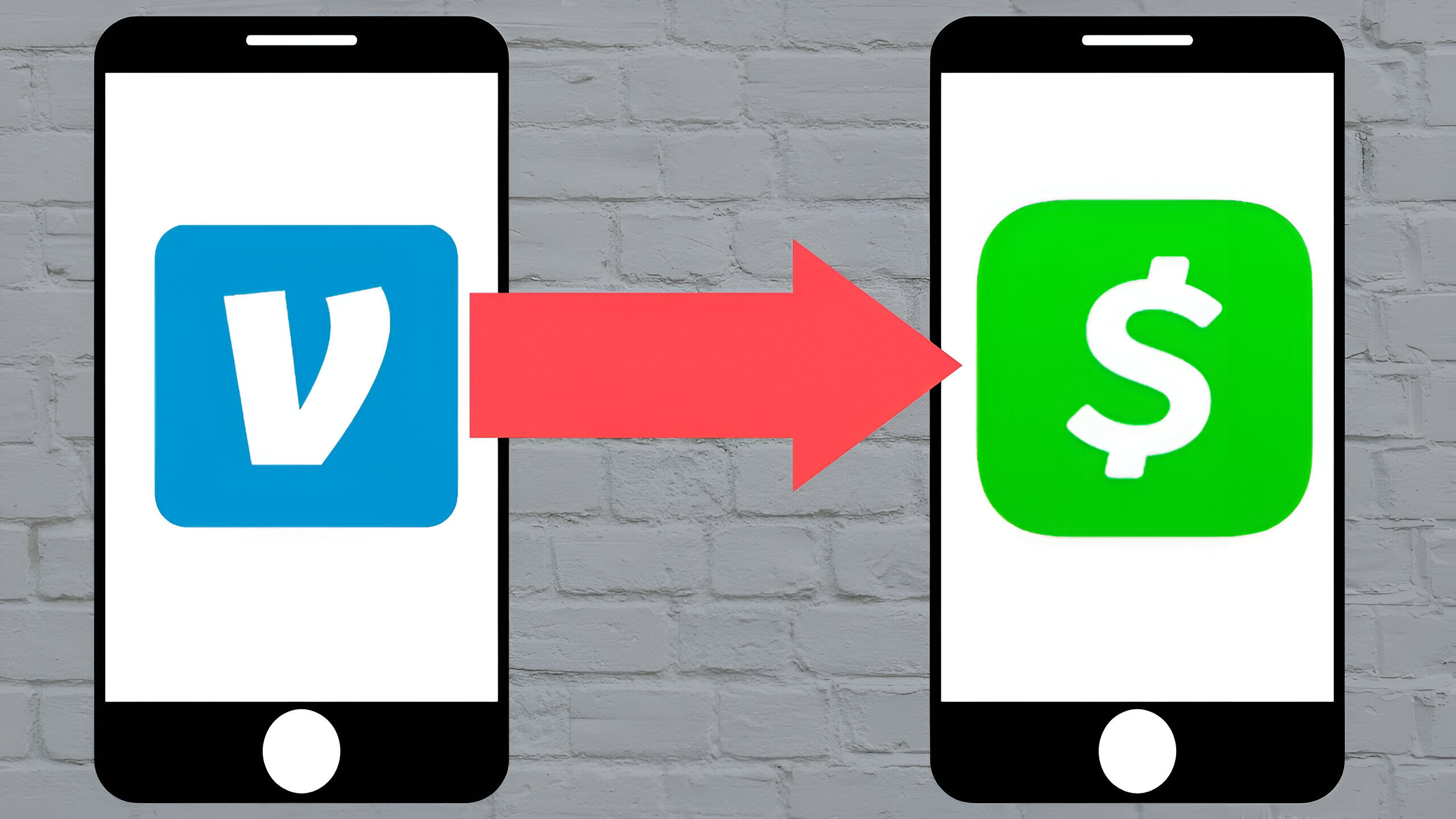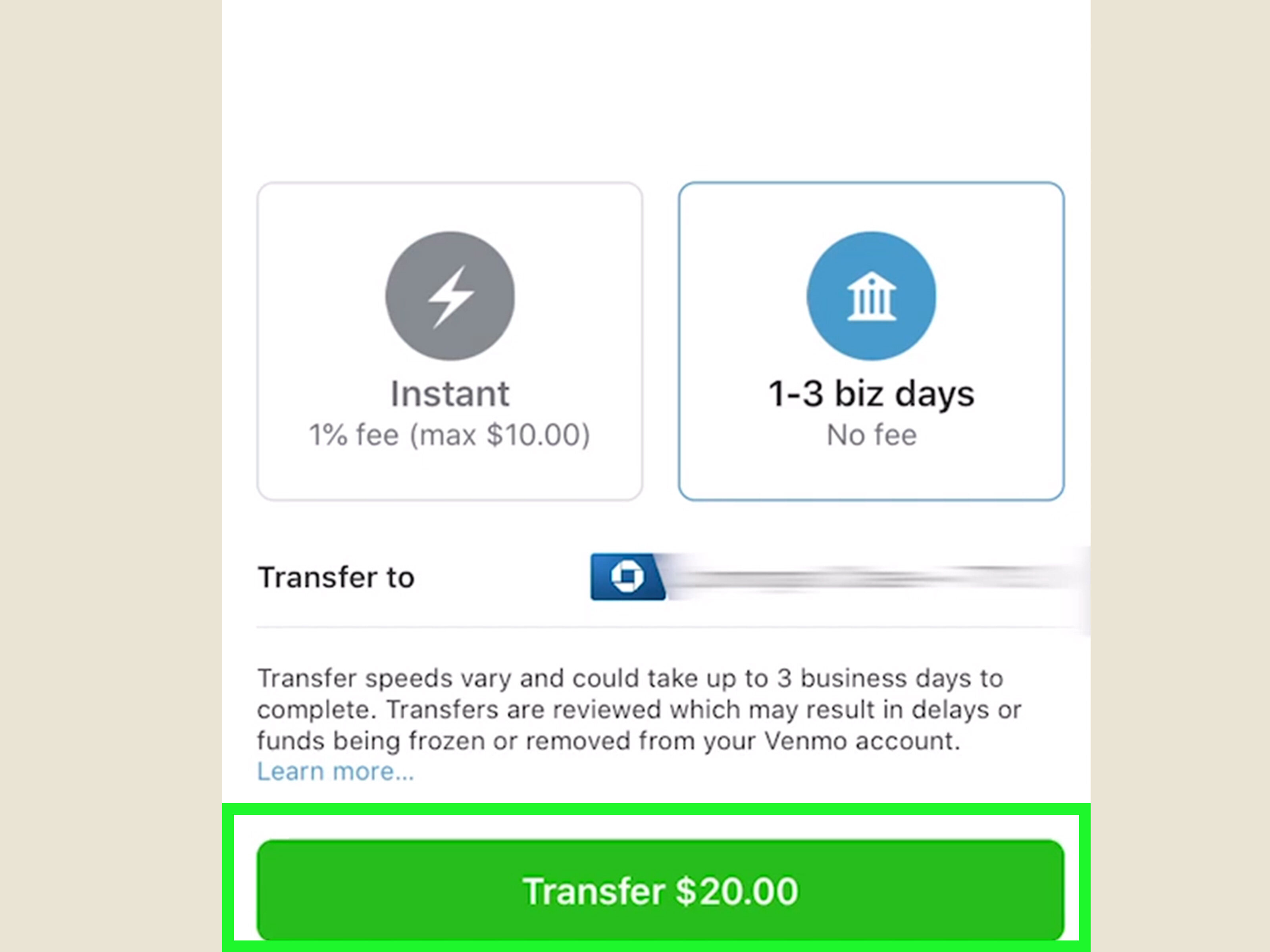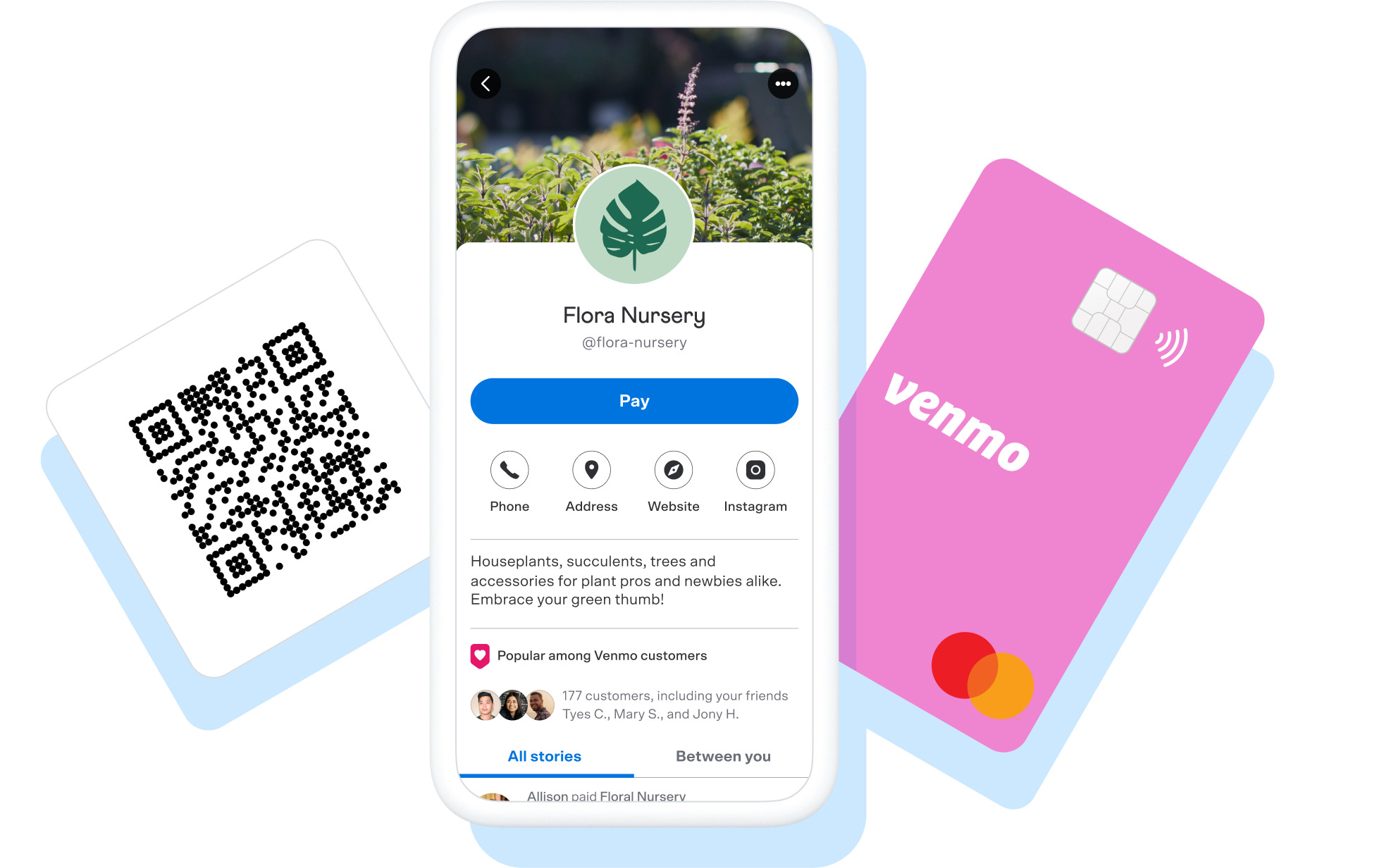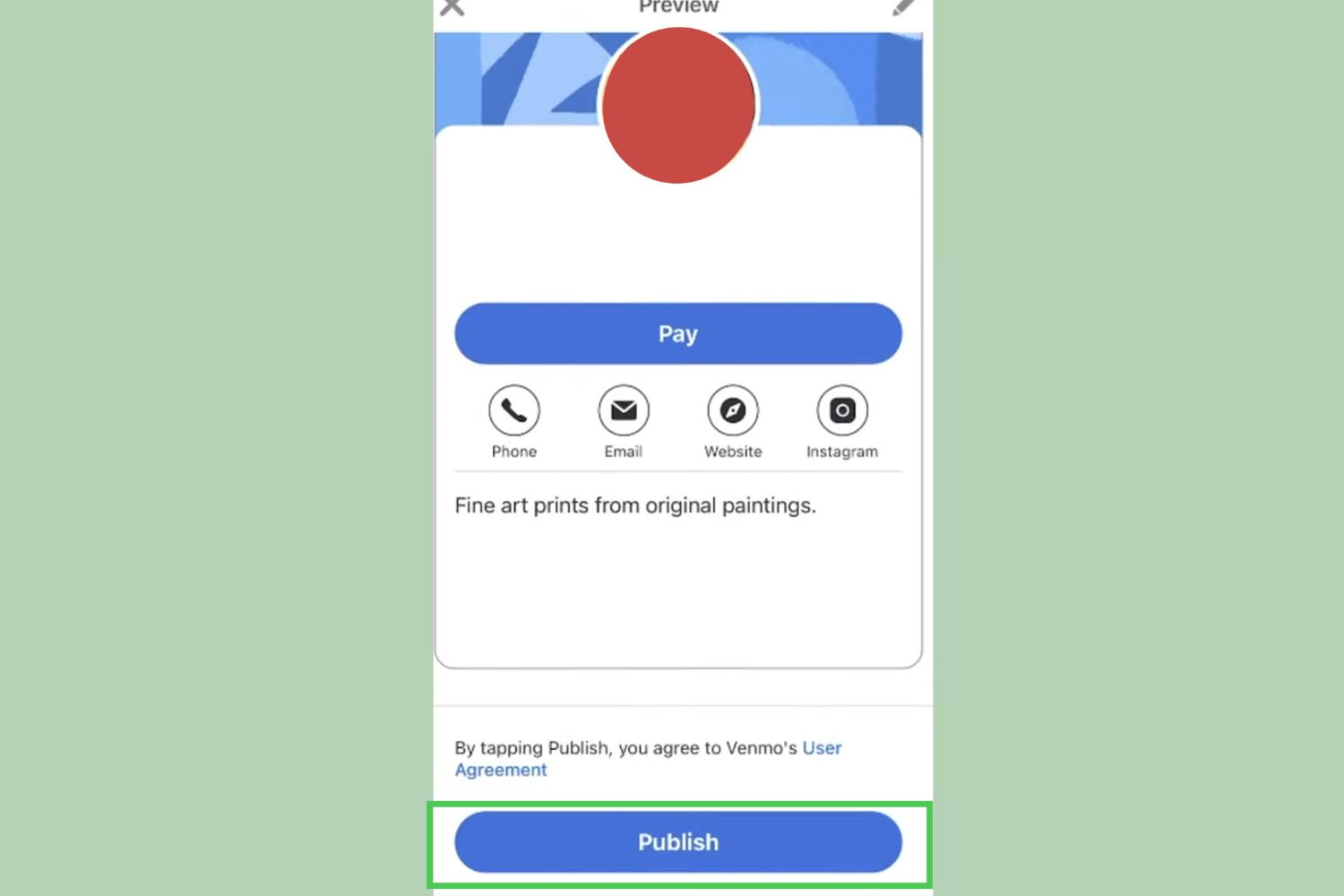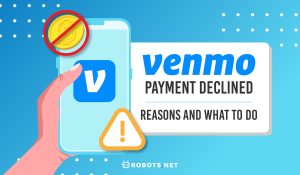Introduction
Venmo has revolutionized the way we transfer money to friends, family, and even businesses. With its user-friendly interface and seamless functionality, Venmo has become a popular choice for online transactions. But what if you need to add money to your Venmo account? In this article, we will explore various methods and platforms where you can conveniently add funds to your Venmo account.
Whether you want to transfer money from your bank account, use your debit or credit card, or even add cash to your Venmo balance, we’ve got you covered. We’ll also discuss how you can add funds to your Venmo account through money transfer services like PayPal or Cash App, and even through direct deposit from your paycheck. Additionally, we’ll introduce you to the Venmo cash card, a prepaid card that provides quick access to your Venmo balance.
By exploring these different avenues, you’ll have a clear understanding of the various options available to add money to your Venmo account. So, let’s dive into the details and find the most suitable method for your needs!
Venmo: A convenient way to transfer money
Venmo has transformed the way we transfer money, making it easier, faster, and more convenient than ever before. What was once a hassle involving checks, bank transfers, or even physical cash can now be done with just a few taps on your smartphone. Venmo allows you to send and receive money directly from your bank account or credit/debit card, eliminating the need for cash or check transactions.
One of the key benefits of using Venmo is its user-friendly interface. The app is designed to be intuitive and user-friendly, allowing even those who are not tech-savvy to quickly navigate and complete transactions. Sending money to friends, splitting bills, or even paying for goods and services has never been easier.
Another advantage of Venmo is its seamless integration with social media. Users have the option to connect their Venmo account with their Facebook friends or phone contacts, making it effortless to find and send money to people in their network. Additionally, Venmo’s “Newsfeed” feature allows users to see and interact with their friends’ transactions, adding a social element to the money transfer process.
Security is a top priority for Venmo, and they have implemented measures to protect user information and transactions. The app requires users to set up a secure password or use biometric authentication, such as fingerprint or face recognition, to access their accounts. Moreover, Venmo offers buyer and seller protection for authorized purchases, providing users with peace of mind when making transactions.
Overall, Venmo has emerged as a convenient and reliable platform for transferring money. With its user-friendly interface, social integration, and strong security measures, it has become a go-to choice for both personal and business transactions. So, whether you need to split the dinner bill with friends or pay your share of the rent, Venmo offers a seamless and hassle-free way to transfer money.
How does Venmo work?
Venmo operates as a digital wallet that allows users to send and receive money conveniently. Here’s a step-by-step breakdown of how Venmo works:
1. Signing Up: To get started, you’ll need to download the Venmo app on your smartphone, available for both iOS and Android devices. After installing the app, create an account by providing the required information, such as your name, email address, and phone number.
2. Connecting Your Bank Account: Once your account is set up, you can link your bank account to Venmo. This enables you to transfer money to and from your bank account quickly. Venmo supports major banks, making it easy to connect your account securely.
3. Adding Funds: To add money to your Venmo account, you have several options. You can link your bank account or credit/debit card to transfer funds directly. Alternatively, you can add cash to your Venmo balance by using a compatible cash reload service, available at popular retailers.
4. Sending and Receiving Money: With your Venmo account funded, you can now start sending and receiving money. To send money, simply enter the recipient’s username, mobile number, or email address, followed by the desired amount. You can add an optional note to specify the purpose of the payment. For receiving money, Venmo users can send funds directly to your Venmo account using your username or email address.
5. Privacy and Social Features: Venmo provides users with customizable privacy settings. You can choose to make your transactions private, visible only to the parties involved, or share them publicly on Venmo’s social feed. Additionally, you can like or comment on friends’ transactions, adding a social element to the platform.
6. Withdrawals: When you want to access the funds in your Venmo account, you have several withdrawal options. You can transfer the money to your linked bank account, which usually takes one to three business days. Another option is to use the Venmo cash card, a prepaid card that allows you to make purchases or withdraw cash at ATMs.
7. Fees: Venmo provides free money transfers between friends and family when using a linked bank account or debit card. However, there is a 3% fee when using Venmo for transactions funded by credit cards or other payment methods.
Overall, Venmo offers a convenient and user-friendly platform for transferring money. With its simple interface, multiple funding options, and social features, Venmo has become a popular choice for individuals looking for an efficient and secure way to handle their financial transactions.
Where can I add money to Venmo?
There are various methods and platforms available for adding money to your Venmo account. Here are the primary options:
1. Bank account: The most common and convenient method is to link your bank account directly to your Venmo account. This allows you to transfer funds easily and securely between your bank and Venmo. Most major banks are supported, making it hassle-free to add money to your Venmo balance.
2. Debit or credit card: Venmo also allows you to link a debit or credit card to your account. This enables you to add funds to your Venmo balance from your card and make seamless transactions. However, please note that using a credit card may incur a 3% fee.
3. Cash: If you prefer to use physical cash, you can add money to your Venmo account through compatible cash reload services. These services are available at popular retailers, such as Walmart, CVS, and 7-Eleven. Simply visit a participating store, provide the cashier with the cash amount you want to add to your Venmo account, and it will be reflected in your balance within minutes.
4. Money transfer services: If you have funds available in other money transfer services like PayPal or Cash App, you can link these accounts to your Venmo. This allows you to transfer money from these services to your Venmo account and vice versa.
5. Direct deposit: If you receive a paycheck or other regular payments, you can set up direct deposit to add money to your Venmo account automatically. This option provides a convenient way to consistently fund your Venmo balance.
6. Venmo cash card: Venmo offers a prepaid card called the Venmo cash card. This card, which is linked directly to your Venmo account, allows you to add money to your Venmo balance and access it instantly. You can use the card for purchases or withdraw cash from ATMs.
These are the primary options for adding money to your Venmo account. It’s important to choose the method that suits your convenience and needs. Whether you prefer linking your bank account or card, using cash reload services, transferring funds from other platforms, setting up direct deposit, or opting for the Venmo cash card, Venmo offers flexibility and accessibility in adding funds to your account.
Bank account: The most common method
Linking your bank account to your Venmo account is the most common and convenient method for adding money to Venmo. Here’s how it works:
1. Linking your bank account: To set up this method, navigate to the “Settings” menu in the Venmo app and select “Payment Methods.” From there, choose the option to add a bank account. Follow the instructions provided, which may include entering your bank account information or verifying your identity through a secure process.
2. Transferring funds: Once your bank account is linked, you can easily transfer funds from your bank to your Venmo account. Venmo allows you to initiate transfers of any desired amount, given that you have sufficient funds available in your bank account.
3. Transfer speed: Transfers between your bank account and Venmo typically take one to three business days to complete. This timing may vary depending on your bank’s processing time and other factors. It’s important to plan accordingly and ensure you have enough funds in your Venmo balance to cover any immediate payments.
4. Security measures: Venmo prioritizes the security of your financial information. When linking your bank account, Venmo uses secure encryption and authentication protocols to protect your personal and banking details. Additionally, it’s worth noting that Venmo’s systems undergo regular security audits to maintain a safe and trustworthy platform for its users.
5. Withdrawals: In addition to adding money from your bank account, Venmo also allows you to transfer funds back to your bank account whenever needed. You can initiate these withdrawals directly from the Venmo app. The transfer process typically takes one to three business days, similar to the timeframe for adding funds.
It’s important to note that adding money to Venmo from your bank account is typically free of charge. Venmo doesn’t impose any fees for this method. However, it’s always a good idea to check with your bank regarding any potential fees they may charge for initiating transfers to Venmo.
Linking your bank account to Venmo offers a convenient way to add funds and perform transactions without the need for physical cash or multiple payment platforms. It’s a widely used and trusted method, providing simplicity and flexibility for managing your finances within the Venmo ecosystem.
Debit or credit card: An alternative option
In addition to linking your bank account, Venmo also allows you to add money to your Venmo balance using a debit or credit card. Here’s what you need to know about this alternative method:
1. Linking your card: To add a debit or credit card, go to the “Payment Methods” section in the Venmo app’s “Settings” menu. Select the option to add a card and enter the required information, including the card number, expiration date, and security code.
2. Adding funds: Once your card is linked, you can add money to your Venmo account from your debit or credit card. Venmo allows you to specify the amount you want to transfer, and the funds will be reflected in your Venmo balance almost instantly.
3. Transaction and currency fees: When adding funds to Venmo using a credit card, a 3% fee is applied to the transaction total. However, adding funds with a debit card is usually free of charge. It’s important to consider this fee if you decide to use a credit card for adding funds.
4. Benefit of immediate availability: Adding money to your Venmo balance with a debit or credit card provides the advantage of instantly having those funds available for use. This can be particularly convenient when you need to make immediate payments or transfers.
5. Withdrawals: While adding funds with a debit or credit card is possible, Venmo does not provide a direct option to withdraw funds back to your card. You would need to transfer the funds back to your bank account and then withdraw them from there. Withdrawals from your Venmo balance to your linked bank account typically take one to three business days to complete.
6. Security measures: Venmo employs industry-standard security measures when it comes to handling your debit or credit card details. Your information is encrypted and stored securely to prevent unauthorized access.
Using your debit or credit card to add money to Venmo offers a convenient alternative to linking your bank account. It provides the flexibility to instantly add funds to your Venmo balance and make transactions without relying solely on your bank account. However, it’s essential to consider any applicable transaction fees for credit card use and keep in mind that withdrawals back to your card would involve transferring the funds to your linked bank account first.
Cash: The simplest way to add money
If you prefer using physical cash, Venmo provides a convenient way to add money to your Venmo account. Here’s how you can add cash to your Venmo balance:
1. Cash reload services: Venmo has partnered with select retailers to offer cash reload services. These services allow you to add money to your Venmo account by depositing cash at participating stores. Some popular retailers that offer this service include Walmart, CVS, and 7-Eleven.
2. Finding a participating store: To locate a store that offers cash reload services, open the Venmo app and tap on the menu icon. From there, select “Manage Balance” and then “Add Money.” Venmo will display a list of participating stores near your location where you can visit to add cash.
3. Adding cash to your Venmo balance: Once you’ve located a participating store, visit the store and approach the cashier or customer service desk. Let them know that you want to add cash to your Venmo account. Provide the cashier with the desired cash amount you want to add, and they will assist you in completing the transaction.
4. Instant availability: The great advantage of adding cash to your Venmo balance is that the funds are usually available for immediate use. Once the store processes the cash deposit, the added funds will be reflected in your Venmo account balance almost instantly.
5. Transferring from Venmo balance: With cash added to your Venmo balance, you can make payments to friends, family, or businesses directly from your account. You can also request money from others or transfer funds to your linked bank account when needed.
It’s important to note that there may be fees associated with using cash reload services. These fees can vary depending on the specific retailer and the amount being deposited. It’s recommended to check with the store or retailer to understand any fees involved before adding cash to your Venmo account.
Adding cash is a simple and straightforward way to fund your Venmo account, especially if you prefer using physical currency. With cash reload services available at major retailers, you can conveniently add cash and enjoy instant access to your funds in the Venmo app.
Money transfer services: Adding funds from PayPal or Cash App
In addition to traditional methods, Venmo allows you to add funds to your Venmo account from other money transfer services like PayPal or Cash App. This provides flexibility and convenience if you already have funds available in these platforms. Here’s how you can add money to Venmo using these services:
1. Linking accounts: Before you can transfer funds, you need to link your Venmo account with your PayPal or Cash App account. To do this, open the Venmo app and navigate to the “Settings” section. Select “Payment Methods” and choose the option to add PayPal or Cash App as a payment method. Follow the provided instructions to link your accounts.
2. Transferring funds: Once your accounts are linked, you can initiate a transfer from your PayPal or Cash App account to your Venmo account. Launch the Venmo app and tap on the menu icon. From there, select “Manage Balance” and then “Add Money.” Choose the option to transfer from PayPal or Cash App and select the desired amount to transfer.
3. Transfer speed: The transfer time for funds from PayPal or Cash App to your Venmo account varies. It generally takes one to three business days for the funds to be available in your Venmo balance. The exact timeframe may depend on factors such as processing speed and any potential security checks.
4. Using transferred funds: Once the funds are added to your Venmo account, you can use them just like any other money in your balance. You can send money to friends, family, or businesses, make purchases, or withdraw funds to your linked bank account or Venmo cash card.
5. Fees and limitations: It’s important to note that there may be fees associated with transferring funds from PayPal or Cash App to Venmo. These fees can vary and are typically determined by the specific service provider. Additionally, there may be limitations on the amount you can transfer at one time. It’s recommended to review the fee structure and any transfer limits before initiating the transfer.
By linking your Venmo account with PayPal or Cash App, you expand your options for adding money to your Venmo balance. This allows you to consolidate funds from multiple platforms and provides greater flexibility when making payments or managing your finances.
Direct deposit: Adding money from your paycheck
A convenient way to add money to your Venmo account is through direct deposit from your paycheck. This method allows you to automate the process of adding funds, ensuring a regular and consistent flow of money into your Venmo balance. Here’s how you can set up direct deposit:
1. Obtain your account and routing numbers: To set up direct deposit, you’ll need to provide your employer with your Venmo account information, including your account number and routing number. You can find this information by navigating to the “Settings” menu in the Venmo app and selecting “Direct Deposit.”
2. Notify your employer: Inform your employer that you would like to set up direct deposit to your Venmo account. They will provide you with the necessary paperwork or online forms to complete the process. Fill out the required information, including your Venmo account details.
3. Verify and activate direct deposit: Once you’ve submitted the required information to your employer, they will process your request. It may take one or two pay cycles for the direct deposit to begin. Once activated, your paycheck will be directly deposited into your Venmo account on the designated pay date.
4. Transfer funds from your Venmo balance: With direct deposit set up, the funds from your paycheck will be automatically added to your Venmo account. From there, you can use these funds to make payments, transfer money to others, or withdraw funds to your linked bank account or Venmo cash card.
5. Benefits of direct deposit: Direct deposit offers several benefits, including convenience, reliability, and time savings. You no longer need to manually transfer money from your bank account to your Venmo account, as it happens automatically. It ensures that your Venmo balance remains consistently funded, providing peace of mind for your financial transactions.
It’s important to note that the timing of direct deposit transfers may vary depending on your employer’s payroll processing schedule. Typically, the funds will be available in your Venmo balance on the day of your designated pay date or shortly thereafter.
Direct deposit is a hassle-free and efficient way to add money from your paycheck directly to your Venmo account. By setting up direct deposit, you can streamline your finances and enjoy the convenience of having funds readily available in your Venmo balance for all your payment needs.
Venmo cash card: A prepaid card for quick access
In addition to the various methods of adding money to your Venmo account, Venmo offers a prepaid card called the Venmo cash card. This card provides quick, easy access to your Venmo balance and allows you to make purchases or withdraw cash conveniently. Here’s what you need to know about the Venmo cash card:
1. Ordering the card: To obtain a Venmo cash card, open the Venmo app and navigate to the “Settings” menu. Select “Venmo Card” and follow the prompts to apply for the card. Once approved, the card will be mailed to your registered address.
2. Linking to your Venmo account: Once you receive the Venmo cash card, you’ll need to link it to your Venmo account. Launch the Venmo app, go to “Settings,” and select “Venmo Card.” Follow the instructions to associate the card with your account.
3. Accessing your Venmo balance: The Venmo cash card is directly connected to your Venmo account. This means that any funds available in your Venmo balance can be accessed and spent using the card. It provides a convenient way to utilize your Venmo balance for everyday transactions.
4. Making purchases: You can use the Venmo cash card to make purchases at any merchant that accepts Mastercard®. Simply swipe or insert the card at the Point of Sale (POS) terminal and authorize the transaction through a PIN or signature, depending on the merchant’s requirements.
5. Withdrawing cash: The Venmo cash card also allows you to withdraw cash from ATMs that display the Mastercard logo. Withdrawals can be made using the card’s associated Personal Identification Number (PIN), giving you the flexibility to access your Venmo balance in physical form.
6. Managing the card: The Venmo app provides you with control over your Venmo cash card. You can track card transactions, view balances, and manage your card settings directly from the app. You can also temporarily disable or permanently cancel the card if needed.
It’s important to note that the Venmo cash card functionality is subject to the terms and conditions set by Venmo and the associated issuing bank. Ensure that you review and understand any fees, usage limitations, or other requirements that may be applicable to the card.
The Venmo cash card offers a convenient and efficient way to access your Venmo balance in physical form. Whether you need to make purchases or withdraw cash, this prepaid card gives you quick and easy access to your funds, providing flexibility and convenience for your everyday transactions.
Other ways to add money to Venmo
In addition to the common methods mentioned earlier, there are a few other ways you can add money to your Venmo account. While these methods may not be as widespread, they offer alternative options for funding your Venmo balance. Here are some other ways to add money to Venmo:
1. Gift Cards: Some retailers offer Venmo gift cards that you can purchase and redeem for cash that is added directly to your Venmo balance. These gift cards can be a convenient way to add funds, especially if you frequently shop at specific stores that offer them.
2. Third-Party Services: There are third-party services that specialize in adding funds to your Venmo account. These services typically charge a fee for their convenience. However, it’s important to exercise caution when using such services, as they may not be officially endorsed or supported by Venmo.
3. Money Sharing: Venmo allows you to split expenses and request money from others. If you owe someone money or need to collect funds from a group, you can use Venmo’s “Request” feature to request the desired amount from the person or group. Once the payment is made to your Venmo account, the requested funds will be added directly to your balance.
4. Refunds and Returns: If you receive a refund or return funds from a previous transaction, these funds will be credited back to your Venmo balance. Venmo will automatically add them to your account, where you can use them for future payments or withdrawals.
5. Payments and Receiving Money: Whenever someone sends you money using Venmo, those funds will be added to your Venmo balance. Whether it’s a payment for goods or services, reimbursement from a friend, or a gift, these funds can quickly increase your Venmo balance.
6. Promotions and Rewards: Venmo occasionally offers promotions or rewards where they add funds to your Venmo account. These promotions may be based on specific actions, such as referring new users or participating in promotional campaigns. Keep an eye out for such opportunities to benefit from additional funds in your Venmo balance.
It’s important to carefully consider the terms, fees, and limitations associated with these alternative methods of adding money to Venmo. Remember to use trusted and reliable sources that align with Venmo’s policies and guidelines to ensure the security and smooth functioning of your transactions.
By exploring these alternative methods, you can find additional ways to add funds to your Venmo account and maximize the convenience and flexibility that Venmo offers for your financial transactions.
Conclusion
Venmo provides a range of convenient options for adding money to your Venmo account. Whether you prefer linking your bank account, using a debit or credit card, adding cash, transferring funds from other platforms, setting up direct deposit, or utilizing the Venmo cash card, Venmo offers flexibility and accessibility to suit your individual needs.
Linking your bank account is the most common method and allows for seamless transfers between your bank and Venmo. It provides a secure and reliable way to add funds to your Venmo balance. Additionally, using a debit or credit card offers an alternative option, giving you quick access to funds and the convenience of making immediate transactions.
If you prefer using physical cash, the option to add money to your Venmo account through cash reload services offers a practical solution. This allows you to add cash at participating stores and have it reflected in your Venmo balance for instant access.
Transferring funds from platforms like PayPal or Cash App provides flexibility and consolidation of funds across different services. It allows you to manage your finances more efficiently and utilize the funds available in those platforms to your advantage.
For those seeking automation, setting up direct deposit from your paycheck ensures a consistent flow of funds into your Venmo account. This method eliminates the need for manual transfers and offers the convenience of having your paycheck funds readily available.
Finally, the Venmo cash card provides quick and easy access to your Venmo balance. With this prepaid card, you can make purchases or withdraw cash, offering a tangible way to utilize your Venmo funds.
Remember, it’s important to consider any fees, limitations, or terms associated with each method before proceeding. Venmo continues to innovate and expand its services, so keep an eye out for new features that may provide additional ways to add money to your Venmo account.
By exploring and utilizing the various methods discussed in this article, you can effectively add money to your Venmo account and enjoy the convenience and flexibility that Venmo offers for managing your finances and making secure transactions.







